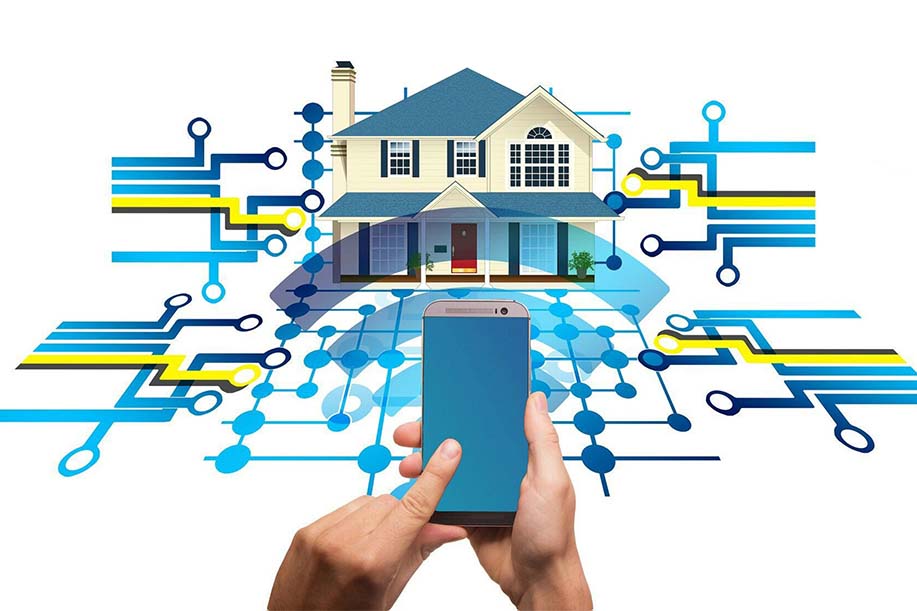The term “smart houses” is used to describe a house that features a very advanced technological environment where there is a synergistic cooperation that provides great comfort, but also great electricity savings, thus a lower bill to pay, and a much greater security thanks to its implemented home automation system.

What is home automation?
This term indicates the study of various technologies, and how these technologies can transform and make the quality of our lives and of our buildings better. Thanks to the many possibilities offered by home automation systems, you will achieve many improvements. A home automation system will allow you to increase your performance, thus allowing you to greatly reduce your consumption while having a greater control. You will also save on your electricity bill and increase your house comfort, have a greater security system, which is going to be easier to use and more functional.
In traditional systems, the switches and regulators and, in general, all the other circuits, will never be able to interact with each other, while in a home automation system you will have one single point from where you can control all of the other systems in the house and manage, program and monitor everything in total relax. Thanks to their great potential, the resources featuring home automation technologies, extend and cover many different fields. Home automation is a technology which is widely used in clinics or to work with the elderly and the disabled (we are talking about home automation care). Over the past few years, this new kind of home automation has grown considerably.
A home automation system is particularly useful in summer: you can easily associate it with an IP address and check your house even if you are away. It has also made its way in the tertiary sector, where it is used to replace old lighting, security and heating systems, communication and IT networks, which are all integrated into a single system. Through the software, you can manage and control all the functions, in all the various environments: hotels, clinics, hospitals, bed and breakfast and so on.
Alternative technologies
Here, you will find a list of the various alternative technologies that you can use to replace traditional systems, to save money in a sustainable and smart way:
- Solar system: this is a high-level energy-efficient system, that through solar thermal, let you accumulate electricity naturally. This system is ideal to replace gas systems (installing, for instance, an electric induction cooker) while exploiting solar energy, through a thermal mechanism.
- Underfloor heating: this system works with a heat pump of air and water, which is correctly adjusted. This is a perfect heating system, because, in addition to heating the water, it will allow you to save on electricity thanks to its functionality. It has a high efficiency: it just needs a very low water temperature to allow the heat pump to heat up.
- Electric car: it is convenient for a reduced policy cost. For the first years, you will be exempted from paying the car tax and you will be able to recharge your car using solar energy (completely free of charge) by simply installing a photovoltaic system, that will give you great savings thus being a great investment. The photovoltaic system will allow you to store the energy accumulated and use it when it is required without wasting electricity. It will also make you more independent.
- Water system: this system is composed of a mechanism that gives you the possibility to recover rainwater, which is very useful for those who have a garden, a car (that can be washed with such a water) or for those who own a large plot of land.
- The thermoregulation: this system regulates the temperature of the room independently, and distributes the heat, only if necessary to restore the required comfort condition, which has been previously programmed by the user. It works with a system of valves and heads that independently control the amount of hot water and adjust it according to the setting. Moreover, the thermostatic valves give not only considerable energy savings but also a greater comfort and greater peace of mind.
LED lighting and energy saving
LED bulbs have a very long life span, they are easy to use because you don’t have to worry about changing them as often as you changed your normal bulbs, and more importantly, they will save you a lot of electricity because they consume up to 85% less than incandescent bulbs. To give you an idea, LED bulbs have a range of 15,000 hours (which is the total sum of hours of 15 incandescent bulbs). This lighting model represents a sustainable model in many ways: it allows you to produce a smaller amount of waste.
A home automation system will not only provide you with an essential comfort and easiness of use, but it will also allow you to concretely reduce your waste. Through interconnected devices (the so-called home automation system), you can better manage the switching on of the light, the opening and closing of doors or shutters, the use of air conditioning and security systems. These commands are all managed by a single device (such as a smartphone, a tablet or a computer) and use energy only when it is really needed.
